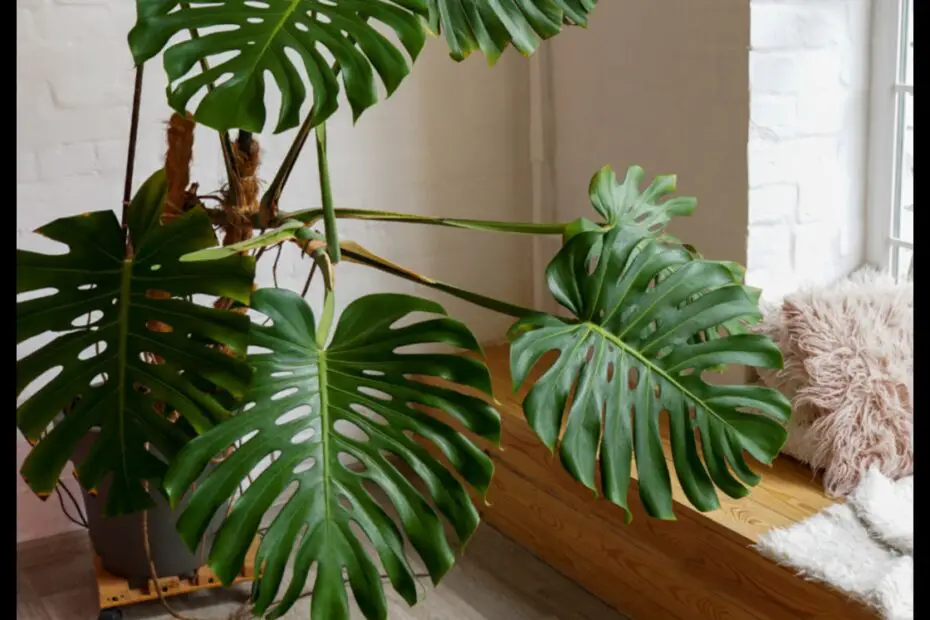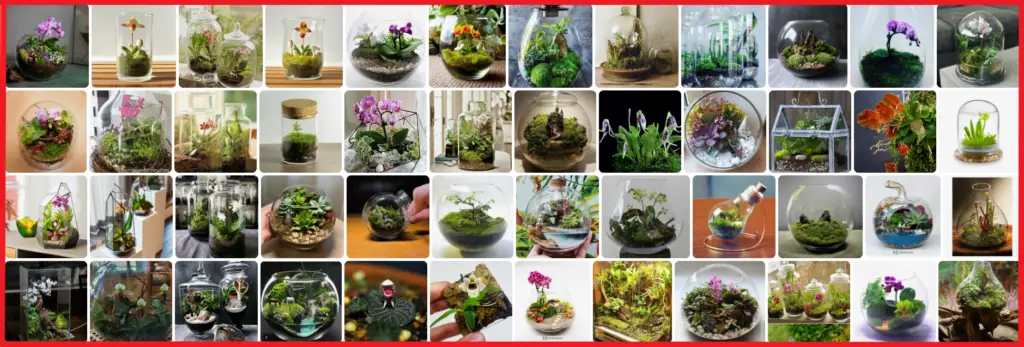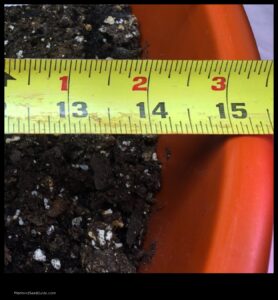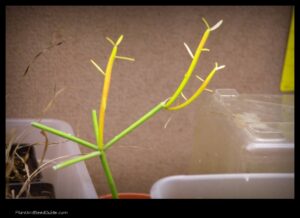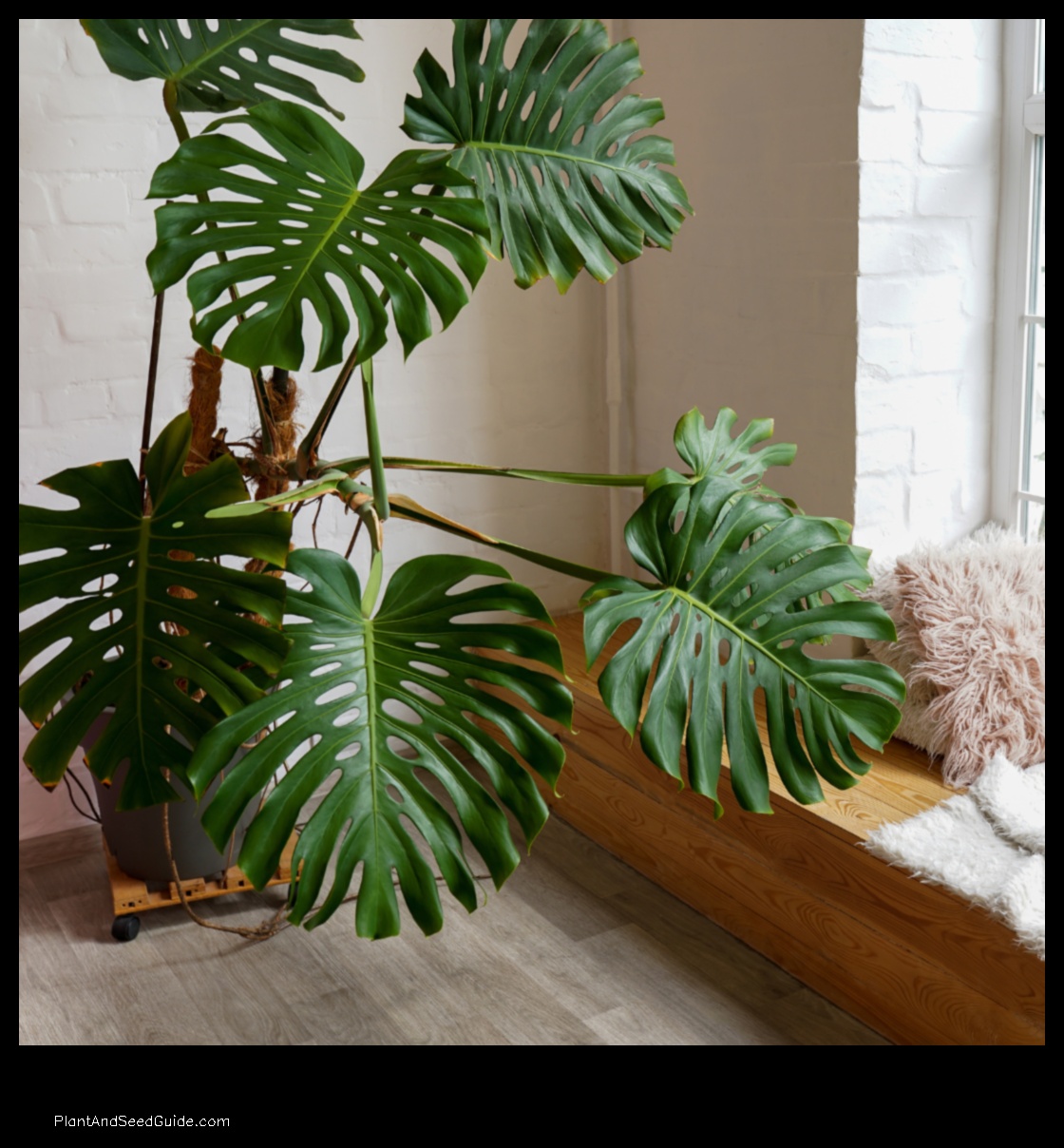 </p>
</p>
How to Save Monstera Plant
This article will teach you how to save a monstera plant that is dying or struggling.
Symptoms of a Dying Monstera
- Yellowing leaves
- Brown spots on leaves
- Wilting leaves
- Root rot
Causes of a Dying Monstera
- Not enough water
- Too much water
- Not enough light
- Pests or diseases
How to Save a Dying Monstera
- Check the soil moisture. If the soil is dry, water the plant thoroughly.
- Check the drainage holes. If the drainage holes are clogged, clear them out.
- Move the plant to a brighter location.
- Treat the plant for pests or diseases.
Step 1: Watering
Monstera plants need to be watered regularly, but they should not be overwatered.
To check if your monstera plant needs water, stick your finger into the soil. If the soil is dry to the touch, it is time to water the plant.
When you water your monstera plant, water it thoroughly until the water comes out of the drainage holes.
Step 2: Light
Monstera plants need bright indirect light.
If your monstera plant is not getting enough light, it will start to yellow and wilt.
To give your monstera plant more light, move it to a brighter location.
Step 3: Soil
Monstera plants do best in a well-draining soil.
A good soil mix for monstera plants will be made up of equal parts potting soil, perlite, and sand.
Step 4: Fertilizer
Monstera plants need to be fertilized regularly, but they should not be overfertilized.
To fertilize your monstera plant, use a balanced fertilizer once a month during the growing season.
Step 5: Pests and diseases
Monstera plants can be susceptible to pests and diseases.
Some common pests that attack monstera plants include mealybugs, aphids, and spider mites.
Some common diseases that affect monstera plants include root rot, leaf spot, and powdery mildew.
If you think your monstera plant is infested with pests or diseases, treat it with a suitable pesticide or fungicide.
FAQ
- Q: My monstera plant is yellowing. What should I do?
- A: If your monstera plant is yellowing, it is likely not getting enough water. Water the plant thoroughly and make sure that the soil is draining well.
- Q: My monstera plant is wilting. What should I do?
- A: If your monstera plant is wilting, it is likely not getting enough water or light. Water the plant thoroughly and move it to a brighter location.
- Q: My monstera plant has brown spots on the leaves. What should I do?
- A: If your monstera plant has brown spots on the leaves, it is likely being attacked by a pest or disease. Treat the plant with a suitable pesticide or fungicide.
>
| Feature | Answer |
|---|---|
| Monstera | A tropical plant native to Central and South America |
| Monstera care | Needs bright, indirect light, moist soil, and regular watering |
| Monstera deliciosa | A popular variety of monstera, known for its large, split leaves |
| Monstera problems | Can be affected by pests, diseases, and underwatering or overwatering |
| Monstera diseases | Can include leaf spot, root rot, and bacterial leaf blight |
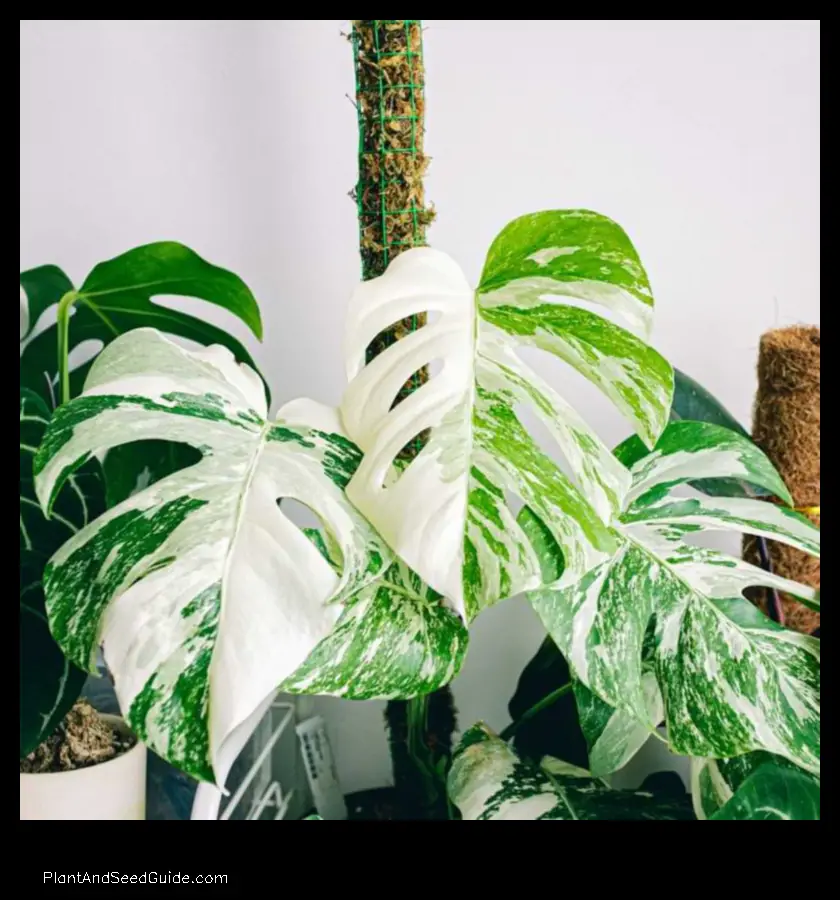
ISymptoms of a dying monstera
There are a few different symptoms that can indicate that a monstera plant is dying. These include:
The leaves are turning yellow or brown.
The leaves are wilting or drooping.
The leaves are curling or twisting.
The plant is not producing new leaves.
The plant is losing its roots.
The plant is starting to smell bad.
If you notice any of these symptoms, it is important to take action to save your monstera plant.
Causes of a dying monstera
There are a number of possible causes of a dying monstera plant, including:
- Not getting enough light
- Not getting enough water
- Being attacked by pests or diseases
- Being overwatered
- Being underwatered
How to save a dying monstera
If you think your monstera is dying, there are a few things you can do to try to save it.
-
Check the watering.
The best way to check if your monstera needs water is to stick your finger into the soil. If the soil is dry to the touch, it’s time to water your plant.Monsteras are susceptible to overwatering, so it’s important to make sure that you’re not watering them too much..
-
Check the light. Monsteras need bright, indirect light to thrive. If your monstera is not getting enough light, it will start to droop and its leaves will turn yellow. Move your monstera to a spot where it will get more light.
-
Check the soil. Monsteras prefer a well-draining soil that is rich in organic matter. If your monstera’s soil is too dense or compacted, it will not be able to drain properly and your plant will start to rot. Re-pot your monstera in a pot with fresh, well-draining soil.
-
Check for pests and diseases.
If you think your monstera is infested with pests, you can treat it with a neem oil solution or insecticidal soap. If you think your monstera has a disease, you can treat it with a fungicide.Monsteras can be susceptible to a variety of pests and diseases, such as aphids, mealybugs, and spider mites..
If you’re not sure what’s wrong with your monstera, you can always take it to a local nursery or garden center for help.
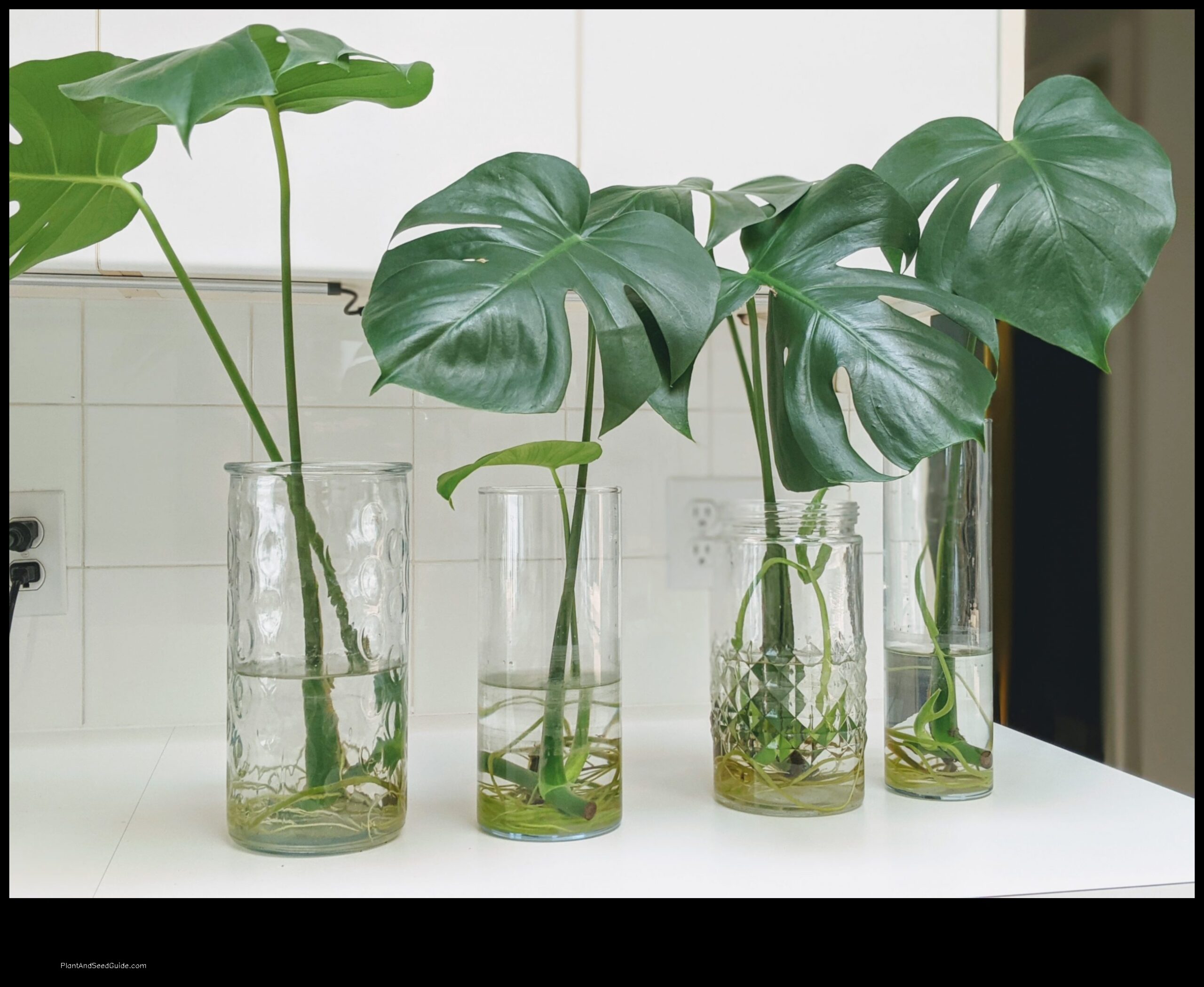
Step 5: Pests and diseases
Monstera plants can be susceptible to a variety of pests and diseases, including:
Aphids
Mealybugs
Spider mites
Scale insects
Fungal diseases
Bacterial diseases
If you suspect that your monstera plant is infested with pests or diseases, it is important to take action to treat the problem as soon as possible. The following tips can help you to identify and treat pests and diseases on your monstera plant:
Inspect your plant regularly for signs of pests or diseases. Look for small insects, white cottony masses, or discolored leaves.
Isolate your plant from other plants to prevent the spread of pests or diseases.
Use a mild soap and water solution to wash off pests. Be sure to rinse the plant thoroughly afterwards.
Treat your plant with a neem oil or insecticidal soap solution to kill pests. Follow the directions on the product label carefully.
Treat your plant with a fungicide to kill fungal diseases. Follow the directions on the product label carefully.
Prune away any diseased leaves or branches. Dispose of the plant material in a sealed bag to prevent the spread of disease.
By following these tips, you can help to keep your monstera plant healthy and pest-free.
VStep 2: Light
Monsteras are tropical plants that need bright, indirect light to thrive. If your monstera is not getting enough light, it will start to droop and its leaves will turn yellow. To fix this problem, move your monstera to a spot where it will receive more light. If you live in a sunny climate, you may need to protect your monstera from direct sunlight by placing it in a spot that gets dappled or filtered light.
Step 3: Soil
The soil that you use for your monstera plant is important for its health.
You can make your own monstera soil by mixing equal parts of potting soil, perlite, and compost. You can also buy a commercial monstera soil mix.Monsteras prefer a soil that is rich in organic matter and drains well..
When watering your monstera, it is important to make sure that the soil is evenly moist. Do not allow the soil to dry out completely, but also do not overwater your monstera.
If you are not sure whether or not your monstera needs water, you can stick your finger into the soil. If the soil is dry to the touch, it is time to water your monstera.
You should fertilize your monstera plant once a month during the growing season. You can use a liquid fertilizer or a slow-release fertilizer.
When fertilizing your monstera, it is important to follow the directions on the fertilizer label. Do not overfertilize your monstera, as this can damage the plant.
By following these tips, you can help your monstera plant grow healthy and strong.
Step 8: Pruning
If your monstera plant is getting too large or unruly, you may need to prune it back. This can help to improve the air flow around the plant and prevent diseases from spreading. To prune your monstera plant, use a sharp pair of scissors or shears to cut off any leaves or stems that are damaged or diseased. You can also prune the plant back to encourage new growth.
When pruning your monstera plant, it is important to make clean cuts. This will help to prevent the plant from becoming infected. You should also avoid cutting into the stem of the plant, as this can damage the plant.
Pruning your monstera plant can be a great way to keep it healthy and looking its best. By following these tips, you can easily prune your monstera plant and keep it thriving.
Monstera plants can be susceptible to a variety of pests and diseases, including:
- Aphids
- Mealybugs
- Scale insects
- Spider mites
- Thrips
- Whiteflies
- Fungus gnats
- Powdery mildew
- Leaf spot
- Root rot
If you suspect that your monstera plant is infested with pests or diseases, it is important to take action immediately to prevent the problem from getting worse.
Here are some tips for dealing with pests and diseases on monstera plants:
- Inspect your plants regularly for signs of pests or diseases.
- Isolate any infected plants from the rest of your collection.
- Treat the infected plants with a suitable pesticide or fungicide.
- Water your plants regularly and make sure they are getting enough sunlight.
- Avoid overwatering your plants, as this can create a breeding ground for pests and diseases.
By following these tips, you can help to keep your monstera plants healthy and free from pests and diseases.
FAQ
Q: What are the symptoms of a dying monstera?
A: The leaves of a dying monstera will start to turn yellow and brown. The plant may also wilt and lose its leaves.
Q: What are the causes of a dying monstera?
A: There are many possible causes of a dying monstera, including:
Not enough water
Not enough light
Too much fertilizer
Pests or diseases
Q: How can I save a dying monstera?
A: There are a few things you can do to save a dying monstera, including:
Watering the plant more often
Giving the plant more light
Repotting the plant into fresh soil
Treating the plant for pests or diseases
- Wild Rose Country: Exploring Untamed Beauty - July 15, 2024
- Wildflower Nursery Decor: Bringing Nature Indoors - July 15, 2024
- Young Sprout of Grass: Nurturing New Life - July 15, 2024
